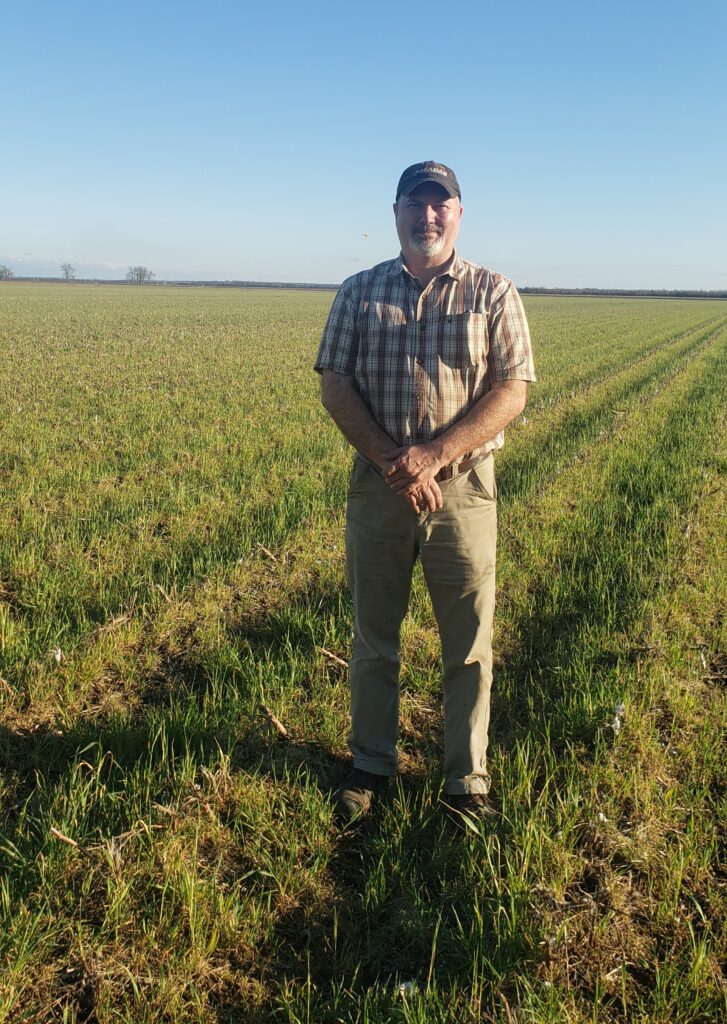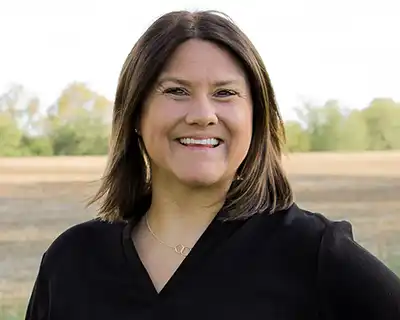Editor’s note: America’s Conservation Ag Movement has embraced farmer-to-farmer knowledge transfer as a key pillar in the strategy to accelerate regenerative ag practice adoption. At the center of the farmer learning communities, exceptional farmers have stepped forward to lead these efforts in their communities. These individuals are leaders in their own innovation and implementation of practices and programs that fit for their unique farm operation and help achieve the goal of continuous improvement. This profile is part of a series of that will highlight these Conservation Stewards, their farms, and their conservation practices throughout the year.
At Rondo Farms, a partnership owned by Wes and Vonda Stevens Kirkpatrick, they aren’t afraid to try new things. Cover crops, conservation tillage, irrigation optimization and careful management of fertilizers and pesticides all have a place at Rondo in Tillar, Ark.
But here’s the catch: None of these conservation practices are universal. They each have their place when it’s right for the land, the agronomy and the financials. Each practice is carefully implemented to cater to the right crop in the right field at the right time to maximize yields and reduce input costs while fortifying soils and building resiliency into productive acres.
To strike the right balance, Rondo relies on a try-and-see approach and is continually innovating its operation to maximize every acre while searching for new ways to be the best possible steward of the land with a focus on long-term sustainability.
We caught up with Wes Kirkpatrick to talk about the farm’s conservation journey and the lessons he’s learned since 2009, when he became a partner on the fourth-generation farm, which grows cotton, soybeans, and field corn on about 4,000 acres.
Trust In Food: How long have you been conducting conservation stewardship practices and programs? What impact have they had on your operations?
Kirkpatrick: We have been using conservation tillage practices for many years. However, because over 90% of our farm is furrow irrigated, we have to maintain furrows in fields for irrigation purposes, so we can’t be true no-till. Fewer tractor trips across fields compared to conventional tillage not only helps maintain soil structure, but also uses less diesel and limits compaction.
We began using computerized hole selection for developing hole-size prescriptions for all our poly pipe irrigation sets around 2005. By using the computerized hole-selection program, we have averaged 20% to 25% savings in pumping cost and a similar reduction in irrigation water consumption.
We began planting cover crops on some of our farm in 2014 and have continued using cover crops on our non-irrigated acres and on fields with limited irrigation water availability and in areas with high potential erosion.
We have been soil sampling for many years to determine crop nutrient needs. We apply all of needed fertilizers closer to when the crop will actually take up the nutrients, thus helping limit nutrient loss through weather events and other environmental factors.
We make insect pest management decisions by careful scouting for pest populations and making insecticide applications based on economic thresholds.

Trust In Food: What does the term “climate-smart agriculture” mean to you?
Kirkpatrick: With scientist’s and researcher’s better understanding of how the things we do as farmers affect our environment and climate, implementing practices that lower our environmental footprint and maintain profitability is what climate-smart agriculture means to me.
Trust In Food: What would you consider your greatest achievements or strengths? What else do you want to accomplish in the next year?
Kirkpatrick: I try to implement no-till practices wherever feasible on my farm. If we don’t have to work the ground, we don’t. This saves time, money, labor, wear and tear on equipment, and allows us to get the planters rolling earlier in the spring, thus maximizing yield potential and efficiency. But again, since most of our farm is furrow irrigated, we can’t be true no-till because we have to maintain an irrigation furrow. Therefore, we might plant on the same bed for multiple years if we don’t need to freshen up the furrows, but if harvest conditions cause rutting of the fields or beds wash away due to weather events, we have to till to maintain furrows.
We are going to implement some remote irrigation systems this season and hope they prove useful. These will allow us to switch irrigation sets via a smart-phone application without physically traveling to the field, potentially saving mileage, time and additional water usage.
Trust In Food: Have they had any agronomic impact? Financial impact?
Kirkpatrick: Planting cover crops on our non-irrigated acres has increased our average annual yield on those acres by 20% to 30%. Computerized hole selection for irrigation sets has reduced fuel consumption by 20% to 25% and reduced irrigation water consumption by a similar amount.
Trust In Food: What other opportunities do you see on your farm or the farms around you?
Kirkpatrick: Planting cover crops and/or maintaining vegetation in highly erodible areas along ditches, streams, etc., is an area that I think we can make great improvements. Getting away from the older mentality that we need to till every acre multiple times because it looks pretty is another area I think we can make strides.
Trust In Food: What state or local organizations have helped you in identifying opportunities or helped you implement practices and programs? What other organizations are you affiliated with?
Kirkpatrick: We’ve worked with our local USDA NRCS and FSA offices on many conservation-oriented programs like the Conservation Stewardship Program and Environmental Quality Incentives Program. We’ve been one of the University of Arkansas’ Discovery Farms for several years and working with that group has helped us recognize many avenues to be better conservationists including cover cropping and nutrient management.
Trust In Food: What advice would you give other farmers as they continue to consider climate-positive practices? Have you had any failures or lessons learned in your journey that you learned from? What would you do differently with what you know today?
Kirkpatrick: Don’t be afraid to try some new things on limited acres at first. If something doesn’t work, make a few changes and try it again. You’ll be less likely to get frustrated and give up if you have a failure, which is a real possibility, on a small number of acres. Once you get to a point you like the results you are getting, then increase the practice on your operation. We need to get away from the mindset that the bottom dollar is the only motivation for implementing practices. Long term sustainability should be a motivator for implementing changes in how we farm.



